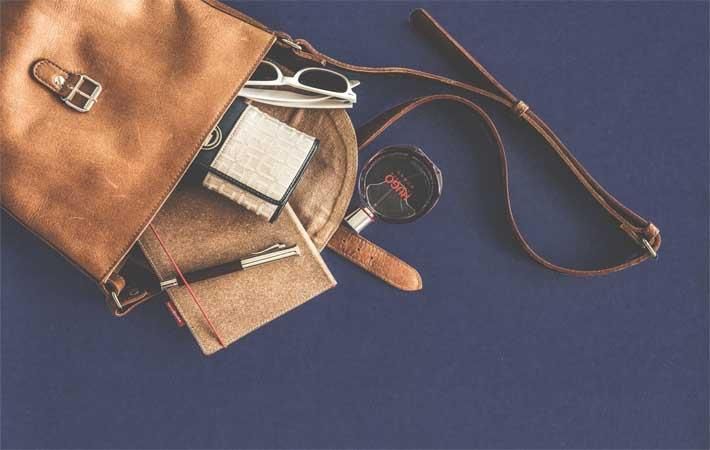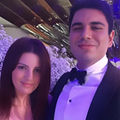Interviews
Top 100 luxury companies made $217 bn in FY16: Report
14 Jun '18
4 min read

The world’s 100 largest luxury goods companies generated sales of $217 billion in FY2016 and the average luxury goods annual sales for a top 100 company is now $2.2 billion, according to a recent report. Top French fashion players LVMH Moët Hennessy Louis Vuitton SE and Kering SA continued to maintain their positions on the leader board.
The fifth annual Global Powers of Luxury Goods report by Deloitte examines and lists the 100 largest luxury goods companies globally, based on the consolidated sales of luxury goods in FY2016 (which is defined as financial years ending within the 12 months to 30 June 2017). It also discusses the key trends shaping the luxury market and provides a global economic outlook.
“The luxury market has bounced back from economic uncertainty and geopolitical crises in 2016, edging closer to annual sales of $1 trillion at the end of 2017,” said Patrizia Arienti, EMEA region fashion & luxury leader, Deloitte Italy. “Whether total global market growth is in single or double digits will depend on many factors, including larger geopolitical factors and their impact on tourism. Growth in the luxury goods industry will continue, unlike in several other industries.”
Italy is the leading luxury goods country in terms of number of companies, while France has the highest share of sales, as per the report. China, France, Germany, Italy, Spain, Switzerland, the UK and the US together made up 83 per cent of the top 100 luxury goods companies and 90 per cent of top 100 luxury goods sales. Spain and France reported the highest growth rates of luxury goods sales. Among the top 10 companies, two are fashion companies.
Between FY2014 and FY2016, composite luxury goods sales for the fastest 20 companies increased at a compound annual rate of 15.1 per cent – nearly four times the rate for the top 100 as a whole, but 7.1 percentage points down on the previous year. The strongest product sectors in the fastest 20 were once again clothing and footwear (ten companies).
Sales by companies in the luxury clothing and footwear sector were lower in FY2016 than in the previous year, although currency-adjusted sales grew by 0.2 per cent, notes the Deloitte report. Both sales growth rates and net profit margin fell for the second year in succession. With 38 companies, this product sector has by far the largest number of companies in the top 100.
All eleven of the companies in the multiple luxury goods sector have by far the largest average size among the top 100. The average annual luxury goods sales was $6.3 billion, and together they accounted for 32.2 per cent of the top 100 luxury goods sales, states the report.
At constant exchange rates, the growth rate for the top 100 was 1 per cent, 5.8 percentage points lower than the 6.8 per cent currency-adjusted growth achieved by these companies in the previous year. There were major winners and losers within the top 100 – 57 companies increased their luxury goods sales year-over-year, with 22 achieving double-digit growth, and nearly one-third of the top 100 achieved a higher rate of sales growth in FY2016 than in FY2015. Growth among the top 100 was weakened in particular by the ten companies which experienced double digit sales decline in FY2016, including two top 10 players – the Swatch Group and Ralph Lauren. However, FY2016 seems to mark the bottom of the downturn in luxury goods sales growth for most companies.
“With continued good economic growth, the Southeast Asian region is attempting to gain ground on the retail and luxury goods industries. More and more brand names are entering the Southeast Asian markets especially at the luxury segment to capitalise on the growth of the young middle-class consumers,” commented Eugene Ho, Deloitte Southeast Asia’s consumer & industrial products industry leader.
“Furthermore, with the growing number of consumers falling into the middle income group, this leads to changes in their spending priorities. For example, affluent younger consumers are starting to hunger for more premium and branded goods. The future market is very much going to be driven by the younger, tech-savvy and more affluent generation. Businesses must recognise the need to adjust their business strategies and implementing digitally-enabled business models to meet consumers’ evolving expectations to enhance the shopping experience,” added Ho. (KD)
The fifth annual Global Powers of Luxury Goods report by Deloitte examines and lists the 100 largest luxury goods companies globally, based on the consolidated sales of luxury goods in FY2016 (which is defined as financial years ending within the 12 months to 30 June 2017). It also discusses the key trends shaping the luxury market and provides a global economic outlook.
“The luxury market has bounced back from economic uncertainty and geopolitical crises in 2016, edging closer to annual sales of $1 trillion at the end of 2017,” said Patrizia Arienti, EMEA region fashion & luxury leader, Deloitte Italy. “Whether total global market growth is in single or double digits will depend on many factors, including larger geopolitical factors and their impact on tourism. Growth in the luxury goods industry will continue, unlike in several other industries.”
Italy is the leading luxury goods country in terms of number of companies, while France has the highest share of sales, as per the report. China, France, Germany, Italy, Spain, Switzerland, the UK and the US together made up 83 per cent of the top 100 luxury goods companies and 90 per cent of top 100 luxury goods sales. Spain and France reported the highest growth rates of luxury goods sales. Among the top 10 companies, two are fashion companies.
Between FY2014 and FY2016, composite luxury goods sales for the fastest 20 companies increased at a compound annual rate of 15.1 per cent – nearly four times the rate for the top 100 as a whole, but 7.1 percentage points down on the previous year. The strongest product sectors in the fastest 20 were once again clothing and footwear (ten companies).
Sales by companies in the luxury clothing and footwear sector were lower in FY2016 than in the previous year, although currency-adjusted sales grew by 0.2 per cent, notes the Deloitte report. Both sales growth rates and net profit margin fell for the second year in succession. With 38 companies, this product sector has by far the largest number of companies in the top 100.
All eleven of the companies in the multiple luxury goods sector have by far the largest average size among the top 100. The average annual luxury goods sales was $6.3 billion, and together they accounted for 32.2 per cent of the top 100 luxury goods sales, states the report.
At constant exchange rates, the growth rate for the top 100 was 1 per cent, 5.8 percentage points lower than the 6.8 per cent currency-adjusted growth achieved by these companies in the previous year. There were major winners and losers within the top 100 – 57 companies increased their luxury goods sales year-over-year, with 22 achieving double-digit growth, and nearly one-third of the top 100 achieved a higher rate of sales growth in FY2016 than in FY2015. Growth among the top 100 was weakened in particular by the ten companies which experienced double digit sales decline in FY2016, including two top 10 players – the Swatch Group and Ralph Lauren. However, FY2016 seems to mark the bottom of the downturn in luxury goods sales growth for most companies.
“With continued good economic growth, the Southeast Asian region is attempting to gain ground on the retail and luxury goods industries. More and more brand names are entering the Southeast Asian markets especially at the luxury segment to capitalise on the growth of the young middle-class consumers,” commented Eugene Ho, Deloitte Southeast Asia’s consumer & industrial products industry leader.
“Furthermore, with the growing number of consumers falling into the middle income group, this leads to changes in their spending priorities. For example, affluent younger consumers are starting to hunger for more premium and branded goods. The future market is very much going to be driven by the younger, tech-savvy and more affluent generation. Businesses must recognise the need to adjust their business strategies and implementing digitally-enabled business models to meet consumers’ evolving expectations to enhance the shopping experience,” added Ho. (KD)
Fibre2Fashion News Desk – India
Popular News
Leave your Comments
Editor’s Pick
































-Ltd..jpg?tr=w-120,h-60,c-at_max,cm-pad_resize,bg-ffffff)





.jpg?tr=w-120,h-60,c-at_max,cm-pad_resize,bg-ffffff)
.jpg?tr=w-120,h-60,c-at_max,cm-pad_resize,bg-ffffff)






